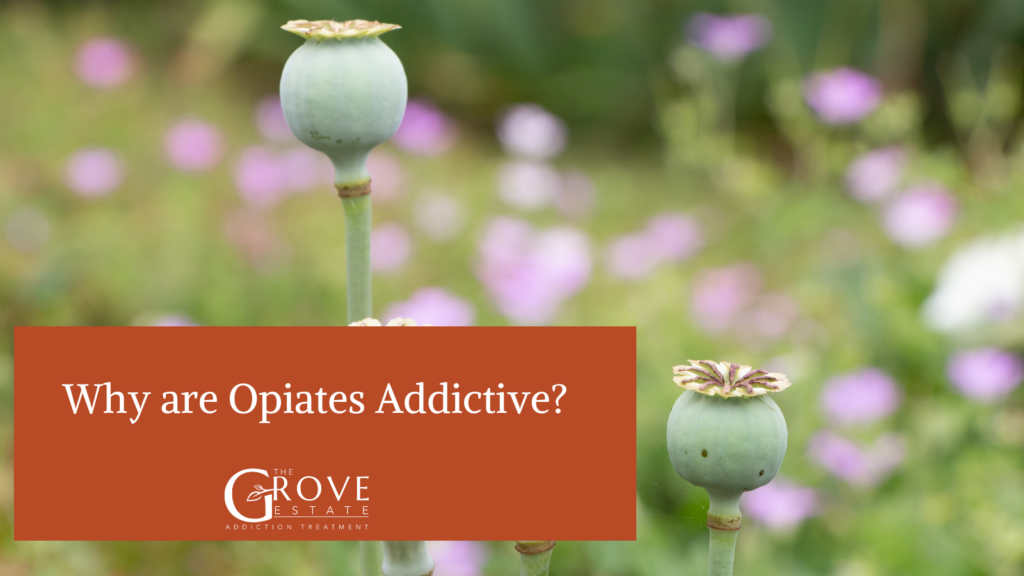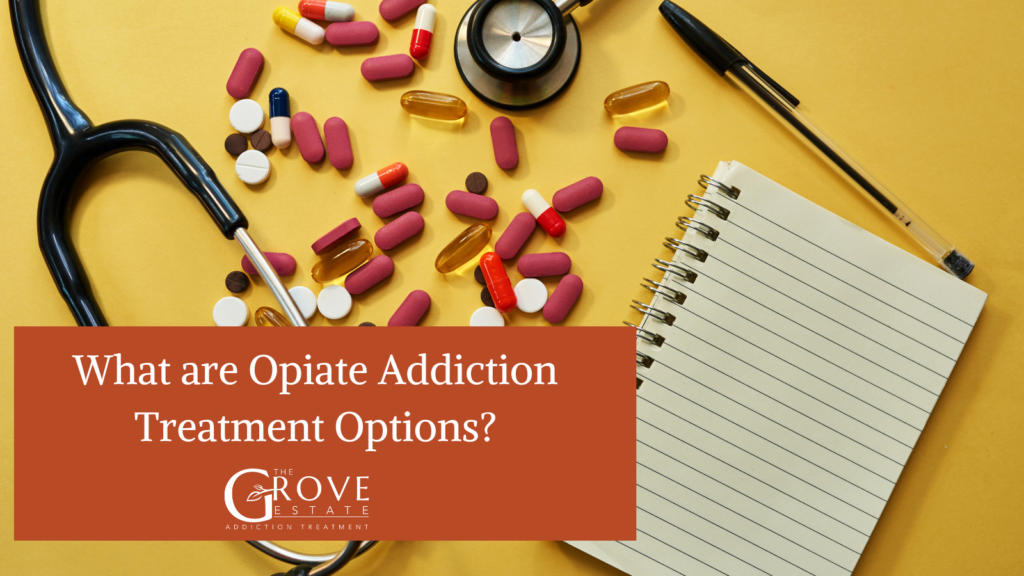Opiates are a class of drugs derived from the opium poppy plant, Papaver somniferum. They are natural substances that act on the opioid receptors in the brain and body, leading to various effects including pain relief, sedation, and euphoria. Opiates include substances such as morphine, codeine, and thebaine.
Opiates are clinically used for their analgesic effects and are prescribed for moderate to severe pain management. However, they also carry a high risk of dependence, addiction, and overdose. Because of these risks, their use is tightly regulated, and they are typically prescribed cautiously and for short durations.
Some opiates (heroin) are illegal and widely abused for their euphoric effects, while others, like morphine and codeine, are available legally but are still controlled substances due to their potential for abuse and addiction.
What is Opiate Addiction?
Opiate addiction, also known as opioid use disorder, is a chronic medical condition characterized by compulsive, uncontrollable use of opiates despite negative consequences. Addiction to opiates develops when repeated use of these drugs leads to changes in the brain’s chemistry, resulting in a powerful urge to continue using them, even when it causes harm.
According to the American Psychiatric Association, opioid use disorder is a problematic pattern of opiate use with and despite serious potential consequences.

Why are Opiates Addictive?
The Centers for Disease Control and Prevention (CDC) reported about 2.7 million cases of opioid use disorder among people ages 12 and older in 2020.
Opiates are addictive due to their profound effects on the brain’s reward system and the development of physical dependence. Opiates bind to specific receptors in the brain known as opioid receptors, particularly the mu-opioid receptors, which are involved in regulating
pain, pleasure, and reward. When opiates bind to these receptors, they trigger the release of neurotransmitters such as dopamine, which produces feelings of pleasure and euphoria.
This activation of the brain’s reward system reinforces the behavior of taking opiates, making it more likely that an individual will continue using them to experience the pleasurable effects.
With repeated use of opiates, the brain adapts to the presence of the drug by reducing the number of opioid receptors or by desensitizing existing receptors. As a result, individuals may need to take higher doses of opiates to achieve the same desired effects, a phenomenon known as tolerance.
Long-term use of opiates can lead to physical dependence, where the body becomes accustomed to the presence of the drug and adapts its functioning accordingly. At this point, abruptly stopping or reducing opiate use can trigger withdrawal symptoms, which are highly unpleasant and include symptoms such as nausea, vomiting, diarrhea, anxiety, and insomnia.
What Are The Signs and Symptoms of Opiate Addiction?
Symptoms of Opiate Addiction
According to the Diagnostic and Statistical Manual of Mental Disorders, 5th Edition (DSM 5-TR) opiate addiction is diagnosed when an individual presents with problematic opiate use, and at least two other symptoms from the list below:
- Taking opiates in increasingly larger amounts and over a longer period than intended.
- Persistent craving to use opiates.
- Spending a lot of time in pursuit of or recovering from the effects of using opiates.
- Problems with fulfilling responsibilities at school or work.
- Continuous use of opiates regardless of interpersonal and social issues.
- Making changes to lifestyle because of opioid use.
- Using opiates while engaging in risky behaviors.
- Tolerance
- Experiencing withdrawal symptoms that require taking opiates for relief.
Signs of Opiate Addiction
People with opiate addiction also present with certain signs. These signs vary depending on the individual and the severity of addiction. However, there are several common signs that indicate an opiate addiction. Here are a few signs to look out for:
- Constricted pupils (otherwise referred to as pinpoint pupils)
- Drowsiness or sedation
- Slurred speech
- Shallow or slowed breathing
- Itching or scratching
- Nodding off or appearing excessively sleepy
- Weight loss or changes in appetite
- Mood swings
- Irritability
- Anxiety and paranoia
- Apathy
- Depression
- Sudden changes in personality or behavior
- Difficulty concentrating or remembering things
Experiencing these signs and symptoms does not translate to opiate addiction. It’s essential to seek help from a healthcare professional or addiction specialist for an accurate assessment and appropriate treatment.
What Are The Risk Factors of Opiate Addiction?
People who misuse opiates usually encounter it through a legitimate medical prescription or in social circles. Using it for a short period and under medical supervision and guidance reduces the risk of opioid use disorder.
However, misusing the substance or using the substance unsupervised, increases the risk. Other unique characteristics also increase an individual’s chances of getting addicted to the substance.
Here are the risk factors for opiate misuse or addiction:
- Genetics and family history
- Early exposure to drugs
- Childhood trauma
- Sexual assault
- Untreated and co-occurring mental health conditions
- Biological factors
- Gender
- Social and environmental factors
- Previous substance abuse
- Chronic pain
These factors do not guarantee that an individual will develop opiate addiction. However, being aware of these factors helps identify individuals who are at increased risk/
What Are Opiate Withdrawal Symptoms?
People who have developed a tolerance and physical dependence experience withdrawal symptoms when they abruptly stop or reduce opiate use. These symptoms are unpleasant and drive individuals to continue using opiates.
Here are a few opiate withdrawal symptoms:
- Flu-like symptoms (aches, chills, sweating)
- Nausea, vomiting, diarrhea
- Dilated pupils
- Agitation or anxiety
- Insomnia
- Muscle aches and pains
- Intense cravings for opiates

What are Opiate Addiction Treatment Options?
Effective treatments are available for people with opioid use disorder.
- Medications for Opioid Use Disorder: This is the gold standard for treating opiate addiction. These are medications that relieve cravings, block the effects of opiates, and relieve withdrawal symptoms. The United States Food and Drug Administration approves the use of three drugs, Methadone, Buprenorphine, and Naltrexone, for the management of opioid use disorder.
- Behavioral Therapies: Often, behavioral therapy is used alongside the medication to combat opiate addiction. Some behavioral therapies used for treating opioid use disorder include cognitive-behavioral therapy (CBT), contingency management, and motivational interviewing. These forms of therapy help users form coping skills, encourage change, and prevent relapse.
- Support Groups and Peer Support: Participation in mutual aid and peer support programs is often a part of the therapy plan for people with opiate addiction. 12-step programs such as Narcotics Anonymous (NA) and SMART Recovery offer support groups and meetings where individuals can connect with others who are in recovery from opiate addiction.
- Comprehensive Medical and Psychiatric Care: Comprehensive treatment for opiate addiction often includes medical and psychiatric care to address any co-occurring health conditions, such as infectious diseases, chronic pain, or mental health disorders.
- Long-Term Care: Opiate addiction is a chronic condition and the chances of relapse, even after successful treatment abound. Long-term outpatient care is important for a full recovery.
What is The Recovery Process For Opiate Addiction?
The recovery process for opiate addiction is multi-faceted and is different for everyone. It usually starts with acknowledging the presence of opiate addiction and accepting the need for change, followed by a comprehensive treatment plan. During and after the initial treatment, individuals enter a phase of relapse prevention by participating in ongoing therapy and joining support groups.
As individuals progress in their recovery, they begin to reintegrate into their daily lives and work towards rebuilding relationships, pursuing meaningful activities, and achieving personal goals.
How fast does tolerance for opiates set in?
Opiates induce tolerance and physical dependence in as little as 4-8 weeks making it difficult for the body to function without them.
Can opiate addiction occur after a legitimate prescription for pain management?
Yes, opiate addiction develops even when prescribed by a healthcare professional for legitimate pain management purposes. Opiates are highly addictive substances, and prolonged use, even when taken as directed, leads to physical dependence and addiction. It’s essential for individuals to use prescribed opiates cautiously and to communicate openly with their healthcare provider about any concerns or changes in their medication needs.
How does opiate addiction affect relationships with family and friends?
Opiate addiction can strain relationships with family and friends due to behaviors associated with addiction, such as lying, stealing, or neglecting responsibilities. Loved ones may feel hurt, frustrated, or betrayed by the individual’s actions, leading to conflicts and breakdowns in communication. Family therapy and support groups help repair and rebuild relationships affected by opiate addiction.
Is it possible to overdose on prescription opiates?
Yes, it is possible to overdose on prescription opiates, especially when taken in high doses or in combination with other drugs or alcohol. Opiate overdose results in respiratory depression, coma, and death if not treated promptly. Signs of an opiate overdose include slowed breathing, confusion, extreme drowsiness, and unconsciousness. If someone is suspected of overdosing on opiates, it’s crucial to seek emergency medical attention immediately.
Can opiate addiction be successfully treated without medication?
While medication-assisted treatment (MAT) is an effective approach for many individuals with opiate addiction, some people may prefer or benefit from non-medication-based therapies. Behavioral therapies, counseling, support groups, and holistic approaches such as acupuncture, yoga, and mindfulness meditation all play a valuable role in opiate addiction treatment. The most effective treatment approach will vary depending on the individual’s needs and preferences.
What are some common triggers for opiate cravings during the recovery process?
Opiate cravings are triggered by various factors, including stress, exposure to drug-related cues or environments, physical pain, emotional distress, and social pressure. Recognizing and managing triggers is an essential part of the recovery process. Developing healthy coping strategies, engaging in positive activities, and building a strong support network help individuals navigate and overcome opiate cravings during their recovery journey.
Can opiate addiction co-occur with other substance addictions?
Yes, opiate addiction can co-occur with other substance addictions, including barbiturate addiction. Individuals may use multiple substances to enhance the effects of opiates or to mitigate withdrawal symptoms, leading to poly-substance abuse. This can complicate the addiction and recovery process, requiring a more comprehensive treatment approach that addresses all substances involved.
Treatment for co-occurring substance addictions often involves a combination of medication-assisted treatment, counseling, and behavioral therapies. For those dealing with multiple addictions, rehab for professionals programs can offer the necessary support and resources to manage the complexities of poly-substance abuse. Tailored treatment plans ensure that all aspects of the individual’s addictions are addressed, facilitating a more effective and sustainable recovery.

Share This Post



